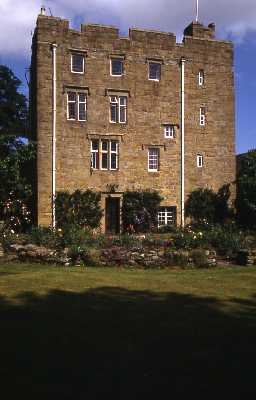Local History
Longhorsley (Northumberland)
The civil parish of Longhorsley lies in rural south-east Northumberland, approximately five miles north-west of Morpeth, the county town of Northumberland.
Between roughly 4000 and 6000 years ago, settled farming lifestyles took over from nomadic hunting lifestyles. Archaeologists call this the Neolithic period. The discovery of a stone axe head in Longhorsley, proves that Neolithic people were living in, or travelling through the area.
Not much is understood about the later prehistoric, Roman or early medieval periods in Longhorsley. Between 2000 and 3000 years ago, during a period archaeologists call the Iron Age, people were living in the area. They built a circular enclosure surrounded by a ditch near the present village of Longhorsley. This may have been a settlement, or an animal pen.
Evidence for medieval life in Longhorsley after the Norman invasion of 1066 exists in the form of written documents. Medieval documents name local landowners and tenants. We know what the medieval parish church of St Helen looked like because writers described it before it was demolished in the 18th century.
Border raiding was a constant threat in Northumberland from the 12th to the 16th century. People who could afford it built defensive tower houses like Horsley Tower, to protect themselves and their possessions.
The new Church of St Helen was built in 1783. Confusingly, it is now known as the Old Church. It was built on the site of a medieval church of the same name. This church fell out of use in the late 20th century, when a 19th century school building in the village became the new parish church.
Linden Hall was built near Longhorsley in 1812, designed by Sir Charles Monck. The grounds and landscaped park of the house were probably laid out around the same time.
During World War II, a pillbox was built at Longhorsley. It was part of a system of defences known as the 'Coquet Line'.
Between roughly 4000 and 6000 years ago, settled farming lifestyles took over from nomadic hunting lifestyles. Archaeologists call this the Neolithic period. The discovery of a stone axe head in Longhorsley, proves that Neolithic people were living in, or travelling through the area.
Not much is understood about the later prehistoric, Roman or early medieval periods in Longhorsley. Between 2000 and 3000 years ago, during a period archaeologists call the Iron Age, people were living in the area. They built a circular enclosure surrounded by a ditch near the present village of Longhorsley. This may have been a settlement, or an animal pen.
Evidence for medieval life in Longhorsley after the Norman invasion of 1066 exists in the form of written documents. Medieval documents name local landowners and tenants. We know what the medieval parish church of St Helen looked like because writers described it before it was demolished in the 18th century.
Border raiding was a constant threat in Northumberland from the 12th to the 16th century. People who could afford it built defensive tower houses like Horsley Tower, to protect themselves and their possessions.
The new Church of St Helen was built in 1783. Confusingly, it is now known as the Old Church. It was built on the site of a medieval church of the same name. This church fell out of use in the late 20th century, when a 19th century school building in the village became the new parish church.
Linden Hall was built near Longhorsley in 1812, designed by Sir Charles Monck. The grounds and landscaped park of the house were probably laid out around the same time.
During World War II, a pillbox was built at Longhorsley. It was part of a system of defences known as the 'Coquet Line'.
N13392
UNCERTAIN
Disclaimer -
Please note that this information has been compiled from a number of different sources. Durham County Council and Northumberland County Council can accept no responsibility for any inaccuracy contained therein. If you wish to use/copy any of the images, please ensure that you read the Copyright information provided.
